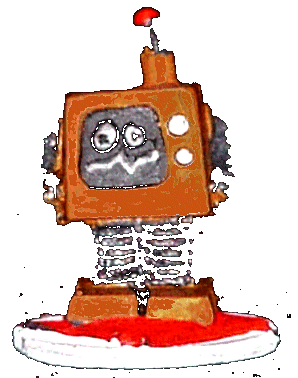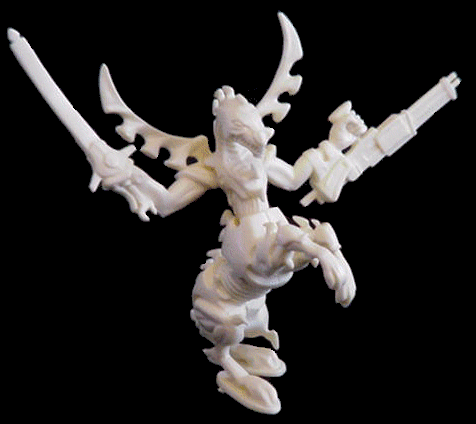
|
|
| 2-4 Players | 30+ minutes |
|
Concept: Race in a wacky 1920s period car racing movie... be a hero or a villain as you go. |
|
|
Gameplay: Players begin by choosing a character sheet. Each character has a unique advantage, some may draw more cards, others may use "personality" items to fix any mishap requirements, and so on. Next, players decide if they will act as a Hero, Villain, or Neutral. The cards are separated into two piles -- one pile is of regular cards, and the other is for fiendish plots (for villains only). Players are dealt the number of cards that is the hand size for the character, usually six. Fiendish plots are not dealt. Players decide who will go first. A player's turn has two phases "the play phase" and the "draw phase". A turn goes like this:
Play centers around building the road. There is one road shared by all players. In order to add a road section, the player's pawn must be on the front-most road section. when placing the new section, the player automatically moves his/her pawn onto it and pays any discard penalty that the card requires. If a player is not at the front-end of the road, then they may use a driving card (usually a road section is both a road and a driving card) -- likewise, the player must pay any discard penalty for entering the next road section. Players who are villains or neutral may sabotage their opponents by playing "mishap" cards. These are cards like "balding tires" or "car won't start". Some mishaps cause the player to draw fewer cards, others cause a player to have a smaller hand size. Heroes cannot play a mishap card. When a Villain successfully plays a mishap card against another player, they may draw a fiendish plot card. Any player may play a sub-plot against an opponent. A player cannot drive along the road until the sub-plot is removed. Only one sub-plot may be played against any one player at a time. To remove a sub-plot a player must play either an "equipment", "personality" or "drive" card to fulfill each sub-plot requirement (there are usually two requirements). Heroes may help other players by playing cards to alleviate the sub-plots -- when they do this, they collect extra regular cards that don't count against their hand size. Neutral players may play any card to fulfill a sub-plot requirement. There are a few cards marked "special" that may be played on another player's turn -- the cards explain themselves. Villains may only play one fiendish plot per turn. The goal of the game is to win a race -- the race length depends upon the number of players. The race lasts 8 road sections for a two player game, 10 road sections for three players, or 12 sections for four players. |
|
|
Winning Conditions:
|
|
|
Our Opinion:
To start off, let me point out some good things in this game's design. First, the character cards were excellent quick reference sheets for the players -- you almost don't need the rule book. The photography on the cards was a nice touch that gets players really into the black and white movie mind set. The basic turn structure of the game was clean and simple in most cases. Most of the time the rules were clean and simple -- there are a few exceptions of varying importance. The rules needed an explicit mention of how the road was to be built. At the first read of the rules, all of the reviewers thought that we were building our own road sections separately. A cursory glance at the card deck clarifies this -- there aren't enough road sections for each player to have their own road. A picture example of the setup would have been nice. We also weren't certain of the intent of the resting phase phrasing: it appears that when resting the player draws two cards and then get your normal draw phase as well (usually 2 more cards for a total of 4) -- it seemed odd, but it kept players from running out of cards. We thought that the intent may have been that the draw phase was eliminated on the resting turn instead (i.e. you only get two cards for resting.) This ambiguity was pretty minor. There are a few important rules that are hidden deep in the rules text: specifically that neutral characters CANNOT use a specific card. This is not on the quick reference sheets and really messes up the game if you find out too late. There are numerous in-play timing problems relating to the definition of "negate" and "special" cards. Special cards may explicitly be played out of turn. Cards that "negate" a mishap aren't labeled special, but apparently can be played out of turn in order to immediately cancel the opponent's card play. This is not obvious in a two player setting... in a three or four player game it becomes a major discussion point. There aren't enough "negate" cards to make this a huge issue, but it is confusing as to why it is there yet the cards are not marked "special". The game appears to have originally been designed to have heroes and villains -- neutrals were an afterthought. Heroes are supposed to be rewarded for helping other players: in a 2 player game, why be a hero? they can't do ANYTHING to slow the opponent down. As far as we could tell, the hero can NEVER win, whereas a neutral or a villain really have the best chances. We initially thought that the neutrals were by far the superior alignment -- but a villain can hold their own if they can constantly thwart all other players with mishaps and fiendish plots. Neutrals will almost always win with all new players. After playing this as a two player game, we thought it was decent -- a few minor rules flaws to overcome, but it was still decent. When we added the third player, who tried to be a hero, we quickly saw where the game fell apart. The hero couldn't help anyone, because typically all subplots and mishaps are resolved before your turn comes around again. We played a new game without a hero, and with major effort a villain was close to winning -- neutral advantages destroy the balance of the game. The villains want more than 5 fiendish plots -- it gets boring rehashing the same few plots over and over. To us, the game felt like it had aspects of Mille Bournes and Family Business -- unfortunately it felt like the game dueled between the two styles and never picked a style of its own. It looks like there is a sequel to this game in the works, hopefully the flawed rules are corrected in the sequel. |
|
|
Where to buy: Ask your local game store to order it -- also check One Small Step's web site. It costs about $25. |
|
 Other Reviews Other Reviews
|
Zombie Main page
|